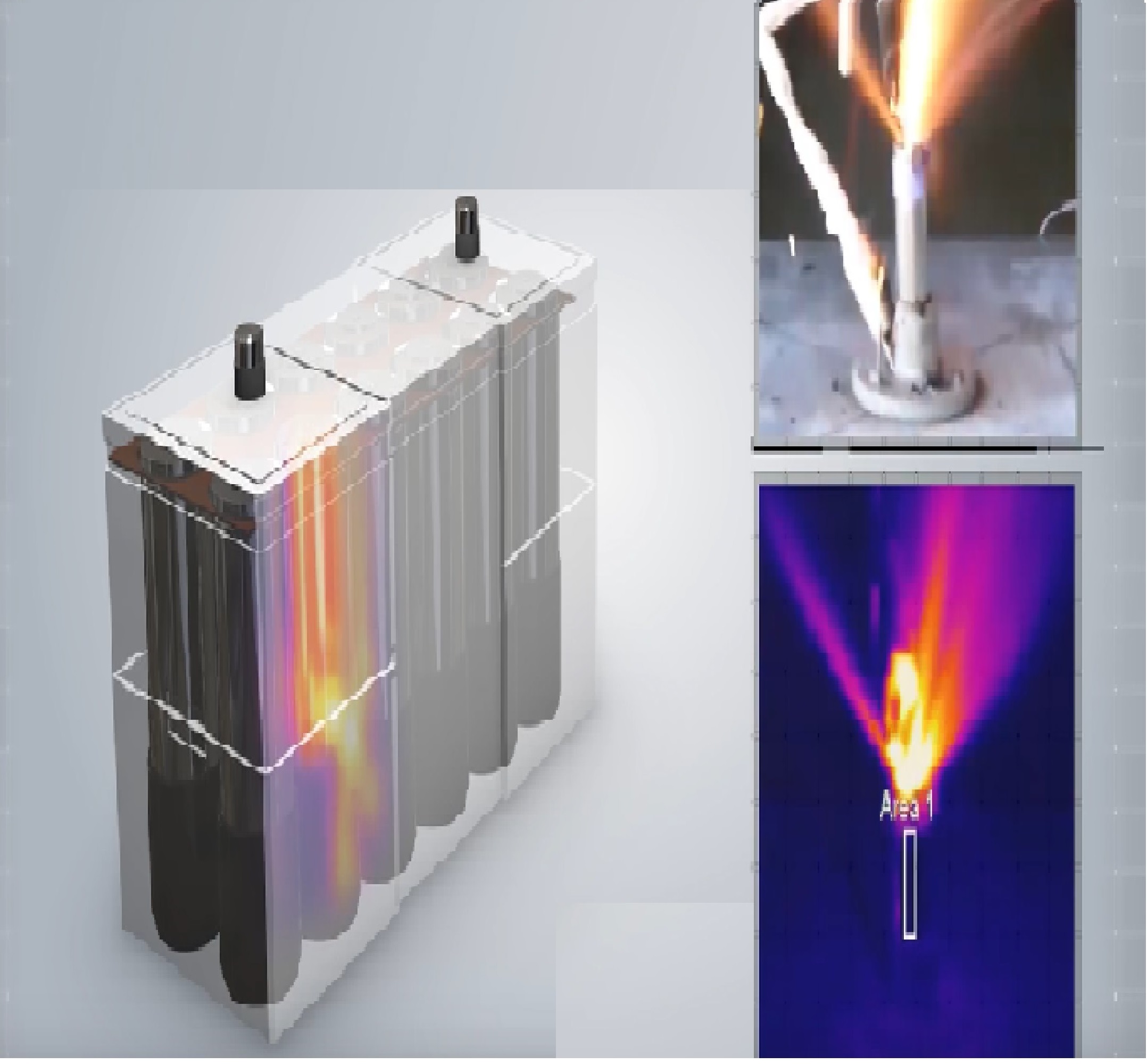
JSC Innovator Eric Darcy

Battery is being tested by inducing the Internal Short Circuit method to one of the cells while introducing heat.
Hi, I’m Eric Darcy. I earned a Ph.D. in Chemical Engineering from the University of Houston and have worked for NASA for 32 years in battery design, verification, and safety assessments for manned spacecraft applications. I am currently the Battery Technical Discipline Lead at the NASA Johnson Space Center. I have a wife, Cheryl, and two grown children, Alexis and Trevor.
What does this invention do?
To put it simply, the Internal Short Circuit Device (ISCD) enables us to quickly induce a catastrophic failure in a Lithium-ion battery cell. We implant the device into the desired location of a normal lithium-ion cell during fabrication. It is very thin, flexible, and relies on a special wax formulation to isolate the short circuit at room temperature. When we’re ready, we activate the device by heating the cell past the melting point (about 135 degrees Fahrenheit) of the wax.
The liquid wax squeezes out of the way of the conducting layers of the device, which results in a hard short circuit and the cell catches fire or explodes. This enables us determine how violent a cell design is during thermal runaway and when placed in a battery, how safe the battery design is in case a cell were to go catastrophic.
What problem does this technology solve?
Rechargeable Lithium-ion batteries are able to hold a lot of energy in a relatively compact size and weight, so they are a popular choice for our spaceflight applications. But they do come with a risk of catching fire or exploding by catastrophic thermal runaway. So, effective safety features are needed (such as advanced separators, current collectors, non-flammable electrolytes, bottom vents, etc.) as well as methods to test those features.
Other methods to test cell safety features usually involve compromising the enclosure of the cell first, or sending excessive heat or electricity into the cell from the outside, but since the nature of this cell failure is internal, not external, the ISCD we invented enables these tests to be performed with higher fidelity to how they occur in the field (high profile examples include the Galaxy Note 7 smart phone in 2016 and the Boeing Dreamline 787 in 2013).
Our ISCD’s convert normal cells into “trigger cells” which have been assembled into subscale and full scale batteries to enable many battery safety verification tests. This allows us to better test the effectiveness of safety mitigation features of spacecraft battery designs in the current ISS spacesuit, the advanced exploration spacesuit, the Orion Command Module, the X-57 Electric Airplane, and commercial crew vehicles.
Previous trigger methods (nail penetration, or introducing excess charge or heat) results in compromised conditions that prevent us from achieving optimally safe battery designs.
Who else might benefit from this technology? What other applications do you envision?
Lithium-ion cells are everywhere. Battery designers for aerospace, automotive, medical, military, and consumer electronic battery industries are and will be achieving safer cell and battery designs because of our device. So far, it has only been implanted in lithium-ion rechargeable cell designs. However, the device can be similarly successful with non-rechargeable cells and other chemical combinations, like Li/CFx, Li/MnO2, etc.
Do you have any future plans to continue development of this technology?
Yes. Since its invention in 2010, the device has been implanted in over 15 Li-ion cell designs. An exclusive licensee since 2018, KULR Technology, is fabricating the device and providing fully assembled trigger cells with the device and is on target to proliferate to it more than 50 designs by 2021.
Several new battery testing/safety standards mention this methodology and as more thermal runaway propagation verification tests are required by government and safety standards, the method is on track for being universally adopted.
Is there anything else you want us to know about your innovation?
The device has received some recognition since the patent was issued in 2015. It was named as an “R&D 100 Winner” in 2016, a Runner-Up for NASA Invention of the Year in 2017, and received an exclusive license in 2018.
Whom should I contact if I want to know more about this technology?
JSC's Technology Transfer and Commercialization Office
Learn more about this technology here.



